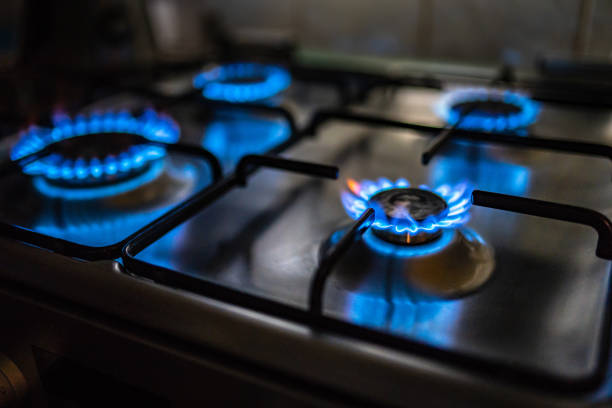
It’s natural to consider your home as a safe space but can you say the same thing about the air? According to the Environmental Protection Agency (EPA), indoor air quality can be up to 10 times worse than what’s outside depending on what you have in the house. If you’re wondering what could be making your air so terrible, you might be surprised by the 10 culprits that are listed below.
1. Rugs And Carpets

New carpeting and rugs tend to contain chemical adhesives that can cause allergic reactions. It’s best to request carpeting that is low on volatile organic compounds (VOCs). Even then, you should ask for it to be unrolled a few days beforehand so it can ventilate. You can also take the added precaution of staying out of the house while the carpet is being installed and keeping the windows open the whole time.
2. Wood Stoves

If you don’t vent and maintain your wood stove well, it can fill your home with harmful substances like nitrogen oxide, carbon monoxide, hydrocarbons, and particulates. While you might not notice the smell, studies show that people with wood stoves can show more symptoms of respiratory issues than those who don’t have them.
3. Gas Ranges And Space Heaters

Without the proper ventilation, gas ranges and space heaters can cause the accumulation of nitrogen oxide and carbon monoxide. Nitrogen oxide is a respiratory irritant while carbon monoxide can cause nausea, headaches, fatigue, and may even be fatal. It’s best to make sure that ranges are installed properly and that there’s a vent that directs the fumes outside. The flames should also be adjusted so that the tips are always blue.
RELATED: The 10 Unhealthiest Places In Your Home
4. Non-Stick Pans

If your non-stick cookware was made from Teflon, you may be running the risk of releasing harmful chemicals into the air. Studies show that it’s ill-advised to heat Teflon-coated pans above 500 degrees and there should be a way to remove the fumes if you do. The better route is to use stainless steel or cast iron pans.
5. Cleaning Products

Chlorine and ammonia are common ingredients in many cleaning products. Unfortunately, they can irritate the respiratory system. This is especially true for people who have asthma. While working in a well-ventilated area is helpful, it might be better to use cleaners without irritating ingredients.
6. Unventilated Bathrooms

Mold is likely to grow wherever it’s damp so the condensation in your bathroom can encourage that. While you may not always see the nooks and crannies where mold grows, you’ll definitely notice the effects on your respiratory system. It helps to ventilate the bathroom well and clean your bathroom regularly.
7. Cracks In The Foundation

This may surprise you but cracks in the foundation, walls, or around the pipes can let in a hazardous gas that’s known as radon. Radon is a by-product of the uranium that’s found in soil, rocks, and water. Since you can’t smell this gas, it’s a good idea to get a testing kit or hire an inspector who can give you some guidance.
RELATED: Breathe Easy: 7 Plants You Need In Your Home Today!
8. Craft Supplies

Usually, craft projects are treated like indoor activities but that might not be the best thing for your air quality. Markers, glues, and even molding clay can have fumes that irritate the respiratory system when you’ve been exposed for extended periods. The best solution is to work outside.
9. Pressed Wood Furniture

Pressed wood or presswood is made from compressing various types of wood fibers together. While it’s an affordable material option for manufacturing furniture, it can also contain formaldehyde. The fumes from formaldehyde can be irritating so if you choose this form of furniture, make sure to air it out before bringing it inside.
10. Dry Cleaned Clothing

Dry cleaning might be convenient but the process often uses perchloroethylene, which is a potentially harmful chemical. The alternative is to wash your clothes yourself, but you can air out the dry-cleaned clothes in the garage or outside before bringing them into the house.
It’s also worth noting that your central heating and air conditioning systems need to be checked regularly. By ignoring that, you run the risk of having dangerous gases and debris accumulate in your home.
Poor indoor air quality can affect your lungs and make you more prone to respiratory illnesses. Even if you aren’t experiencing any of the characteristic symptoms such as chronic coughs, sneezing, wheezing, and persistent respiratory infections, it’s a good idea to ensure that the air in your home is free of pollutants.









